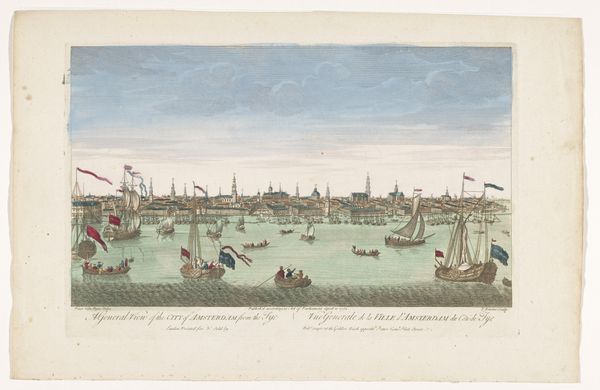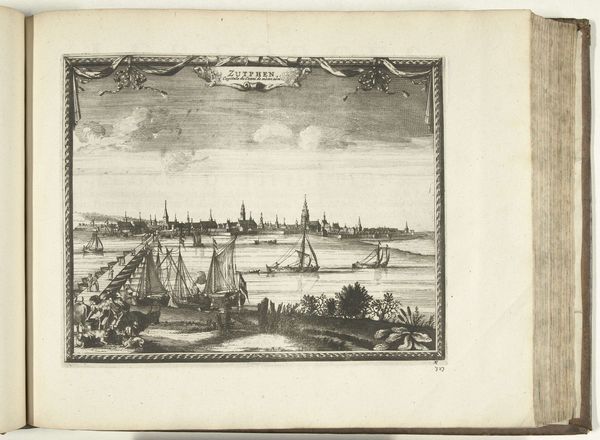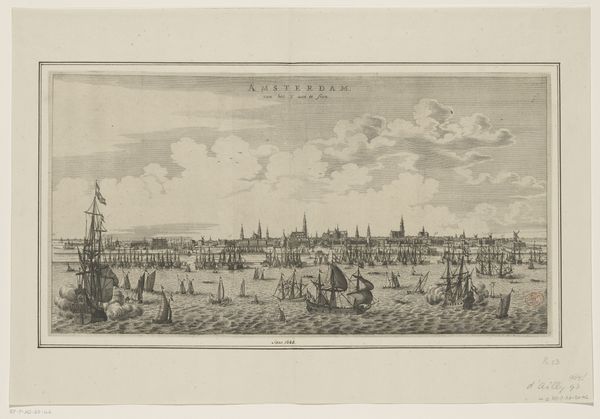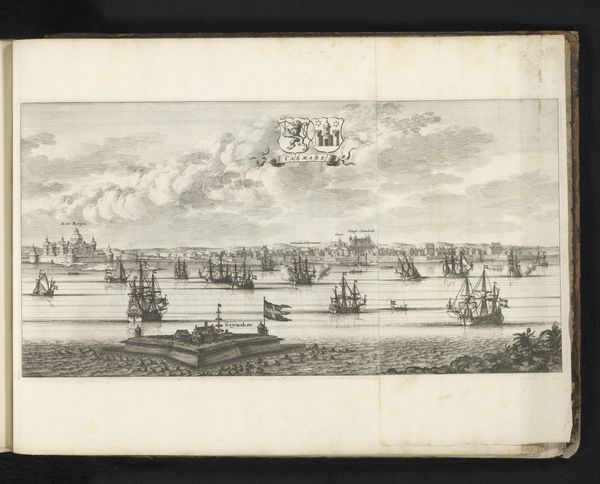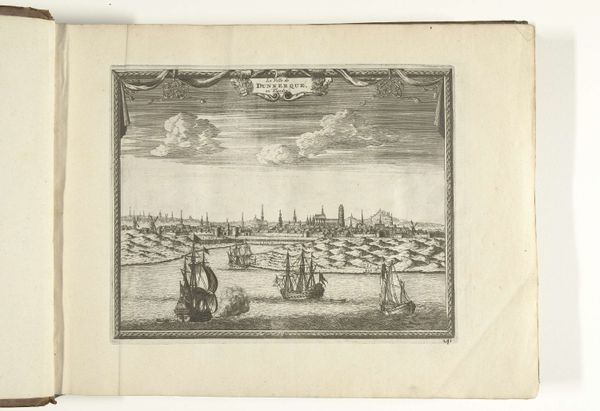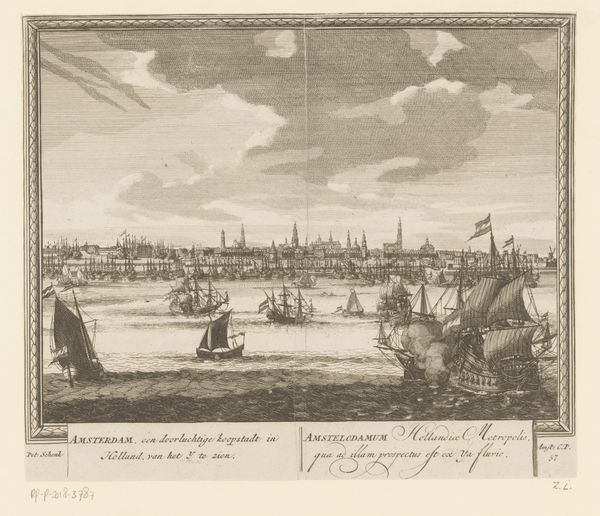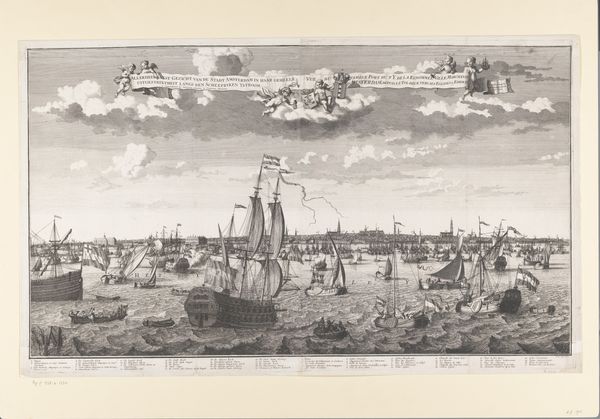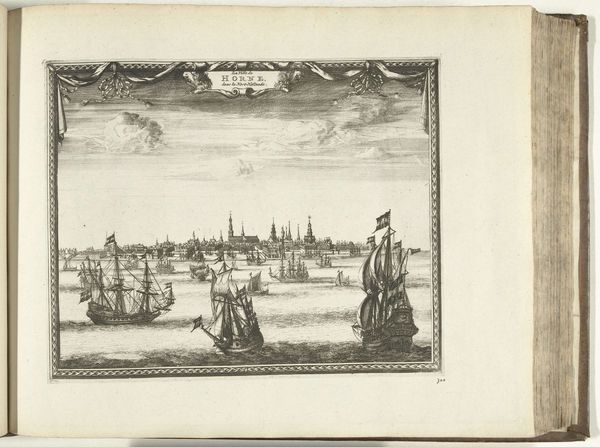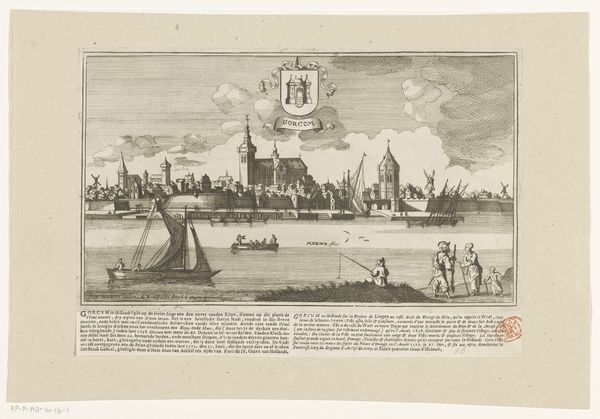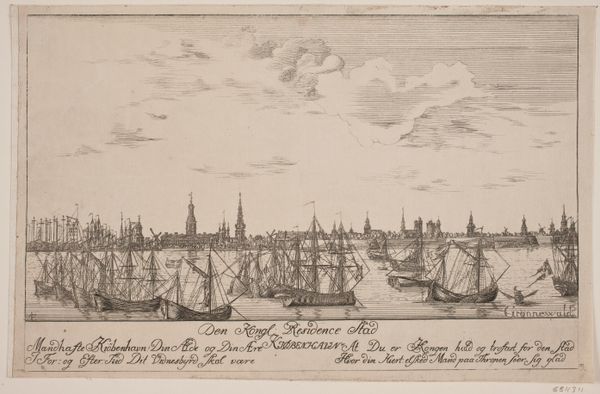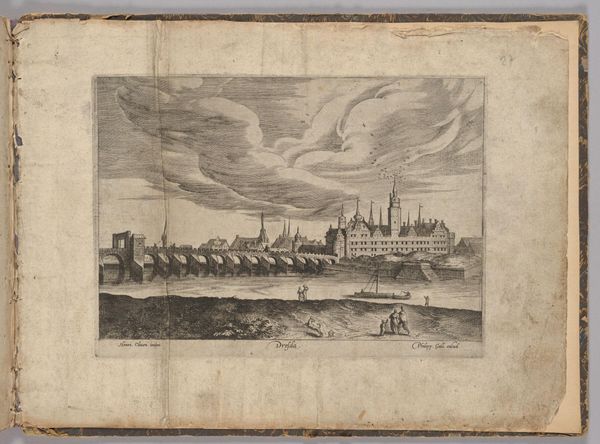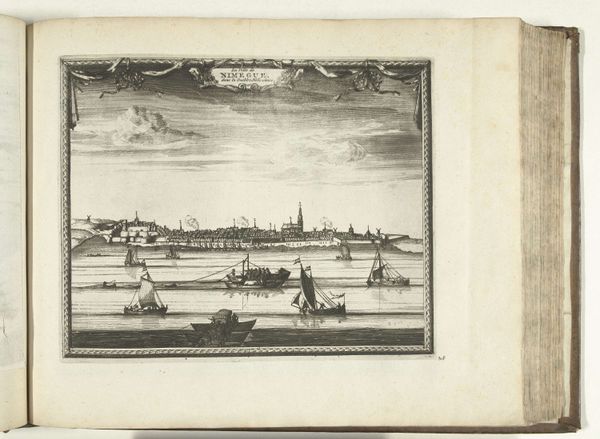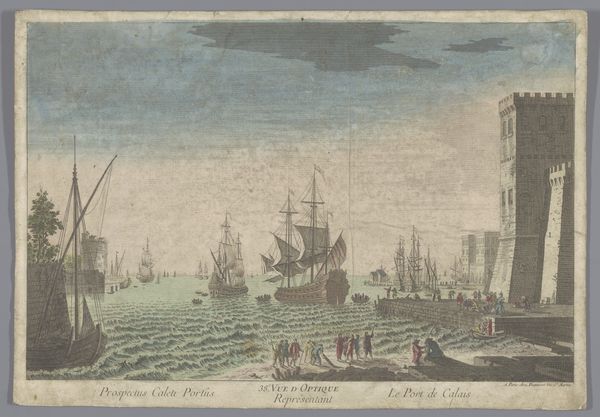
drawing, plein-air, watercolor
#
drawing
#
water colours
#
baroque
#
plein-air
#
landscape
#
watercolor
#
cityscape
#
watercolour illustration
Dimensions: height 149 mm, width 419 mm, height 161 mm, width 430 mm
Copyright: Rijks Museum: Open Domain
Curator: Oh, what a tranquil vista. It feels like a sigh, doesn’t it? Editor: Indeed. What we have here is “View of Nijmegen from the West,” a drawing by Jan Ruyter, created in 1738. It’s a beautiful example of a cityscape rendered en plein air, using delicate watercolours. The scene really brings the Baroque era to life, doesn’t it? Curator: Absolutely, and those colors...almost dreamlike. The soft blues and greens give it such a gentle, contemplative feel. It's like the city is breathing, right there on the page. You can almost hear the water lapping against the boats. I'm instantly transported. Editor: It’s important to consider the perspective embedded within. The choice to view Nijmegen from the west, during a time when Western European powers were solidifying their dominance, subtly positions the viewer, imbuing the scene with the weight of history. Ruyter’s landscape aesthetic idealizes Nijmegen in a moment in time, obscuring class tensions and struggles that would mark a period of great transformation within the city. The water, dotted with sailboats, isn't merely a charming detail; it's a major waterway crucial for trade and a source of Dutch power and expansion, reflecting broader colonial narratives. Curator: That's a really interesting perspective. I was just caught up in the idyllic feeling of the whole scene. But seeing those boats now... they do evoke the wider world, don’t they? Still, there is such charm to this watercolor rendering. Ruyter is painting a story of peaceful trade, and commerce that has always tied humans and water together. You are right, the work definitely hints at much larger world, and its implicit history. Editor: Precisely. We must acknowledge the historical and social complexities present alongside the beautiful aesthetics. Landscape paintings can often act as propaganda, showing the grandeur of specific settlements while reinforcing an idealized and ultimately exclusionary, worldview. Curator: Thank you. You’ve nudged me towards a more nuanced appreciation, while still enjoying its pure artistry and the wistful beauty it embodies. It makes you think about what beauty even means in these times of political division. Editor: Indeed, and reflecting upon these tensions allows the drawing to continue the story of its making. Perhaps there is something liberating about making the world transparent.
Comments
No comments
Be the first to comment and join the conversation on the ultimate creative platform.
